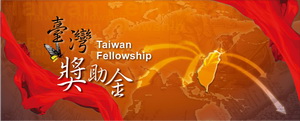The December 2021 issue of Chinese Studies will be a special issue entitled “Studies on Recently Unearthed Texts” and guest-edited by Chen Li-Kuei 陳麗桂, professor at the Depart-ment of Chinese, National Taiwan Normal University. Papers may be submitted in either Chinese or English. Submissions in Chinese should not exceed 25,000 characters, and those in English should not exceed 30 pages. Form and style should follow the “Guide for Submissions to Chinese Studies” and “Chinese Studies Stylesheet.”
Since the excavation of the Niya archaeological site in Xinjiang in 1900, a trend of organiz- ing and researching archaeological artifacts and documents has proliferated in China over the last century. But in the past four to five decades, an upsurge in the research of unearthed texts has gripped the field in the wake of related discoveries at excavations of archaeological and burial sites. The locations of these sites are extensive, including Xinjiang, Gansu, Hebei, Henan, Shan- dong, Jiangsu, Zhejiang, and in particular, Hubei and Hunan. Concerning the finds themselves, the variety of silk manuscripts unearthed from tomb no. 3 at Mawangdui, Changsha, in 1973; the Qin bamboo slips from Shuihudi, Yunmeng, discovered in 1976; the Chu slips found at Guodian, Jingmen, in 1993; the Shanghai Museum slips purchased in 1994 from antique vendors in Hong Kong; as well as the Tsinghua slips and Peking Han slips donated to their respective universities in the 2000s have more so catalyzed wave after wave of fervent research. The period of these unearthed writings spans from the Zhou and Qin dynasties to the early Han, especially revolving around the Warring States period, and their contents cover a wide range of topics and categories: the Six Confucian Classics, various sects from the hundred schools of thought, and specific medi- cal practices. Even more broadly, they concern numerous academic fields, ranging from history and culture to politics and society as well as the transition from the Qin to Han dynasty.
The discovery of these new texts has played a vital role in the development of academic research. We have now been able to verify certain facts regarding several pre-Qin writings, explore new directions in studies on pre-Qin Confucianism, Daoism, military thought, and health and healing, as well as starting a new chapter on our understanding of both the “Huang-Lao” school of thought and the theory of qihua (transformation of qi) cosmology. In addition, these materials have assisted scholarship in readdressing or confirming the modes of thought and theories of previous texts as well as supple- menting ancient writings that have been long lost. Confucian and Daoist writings unearthed together at Chu burial sites from the Warring States period, for example, have proven particularly beneficial in overturning previous misconceptions that Confucianism and Daoism are diametric. Likewise, related research has unveiled the processes of how Confucianism was historically embellished, restoring a more accurate image, and have allowed us to apprehend the fluid boundaries separating various schools of thought. The above has undoubtedly added a wealth of new information to traditional Chinese schol- arship and has opened new and broader avenues from which to explore old topics of interest.
This special issue welcomes studies, whether they be from perspectives of philosophical thought, hermeneutics or textual criticism, classical studies, history, society, or culture, on the above—or other—texts that have been unearthed in the last four to five decades.
※ The deadline for submissions to this issue is Feb. 28, 2023. Please send submissions to us by e-mail at chinesestudies@ncl.edu.twor by the online manuscript submission website at Please click this link
_2.jpg)










